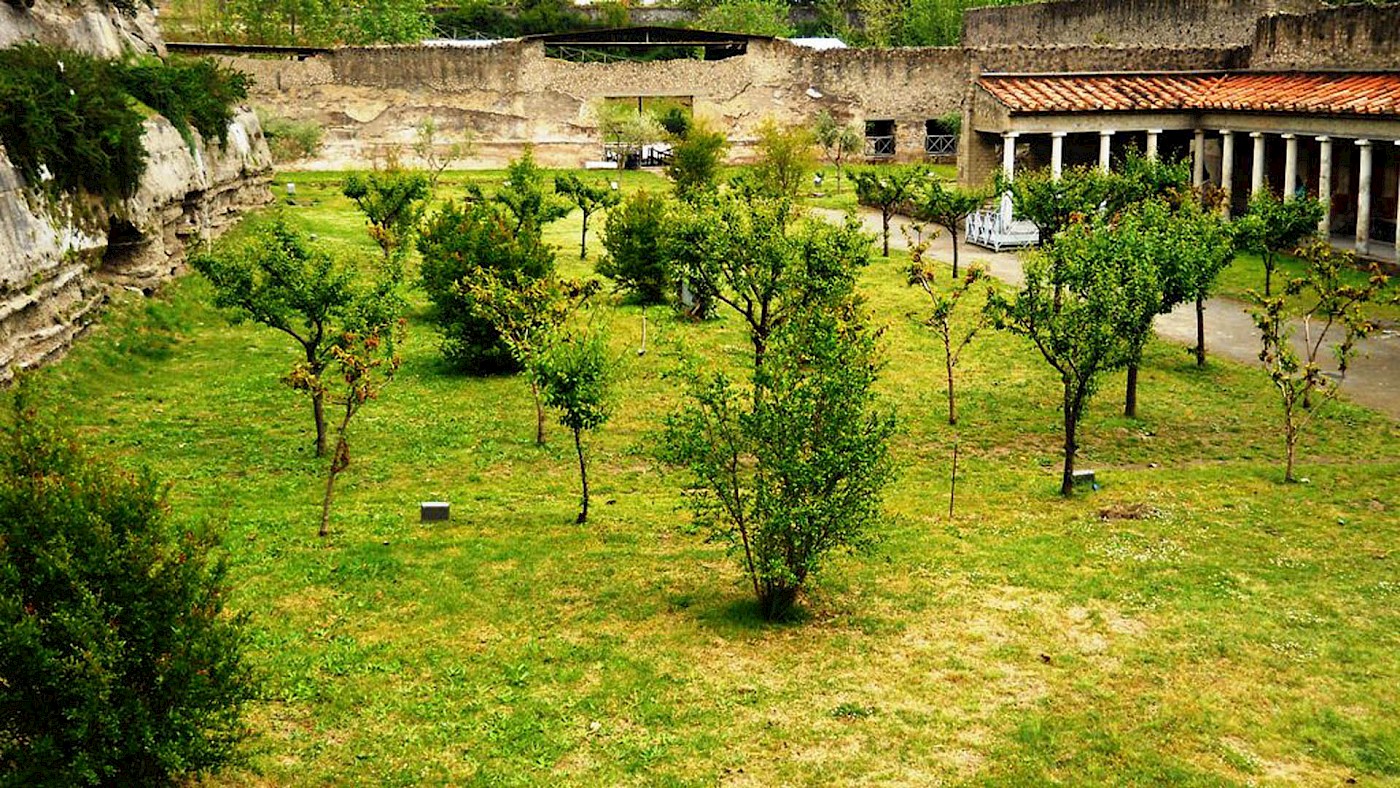The Villa of Poppae is situated in Oplontis, i.e. modern Torre Annunziata, more or less mid-way between Naples and Sorrento. It was discovered in the late sixteenth centuries and excavated in the mid-nineteenth century.
More systematic excavations were begun in the 1960s and are still ongoing. The entire site hasn’t been unearthed yet, because part of it lies beneath modern buildings and roads, preventing access to archaeologists.

The complex has been dated to the first century AD and was a villa maritima (seaside villa), likely intended for otium (holidays), though probably also oil and wine were produced there. It has been identified as belonging to Poppaea Sabina, wife of the famous Emperor Nero, based on an inscription on an amphora.
The Villa of Poppaea went through a major refurbishing in the first century AD, probably following the big earthquake of AD 62, and two or three other modifications. It sports beautiful wall-paintings in the Pompeian Second, Third, and Fourth styles.

The building has a number of big living rooms, one of which features a painting of a sanctuary of Apollo, theatre masks, peacocks, olive trees. It also has a bath complex partially decorated with a representation of Heracles in the Garden of the Hesperides, and a peristyle decorated with “zebra stripes” (see above).
Moreover, an impressive two-story hallway, with clerestory windows as sources of light from above, leads to the villa’s eastern wing. This features a 60m-long swimming pool and entertainment rooms separated by painted garden rooms, which were decorated with real plants and open to the sky. Noteworthy are a tunnel, which probably connected the villa with the ancient sea shore, and big luxurious gardens that once perhaps held oleanders, apple trees, laurel trees, and lemon trees.
This archaeological site can be easily reached by train from Naples, so if you happen to be there, be sure to visit it.
